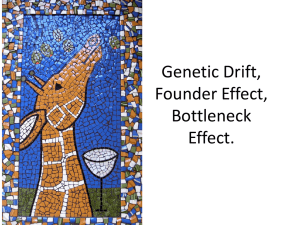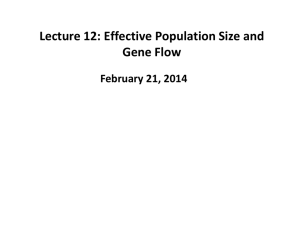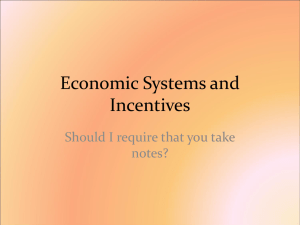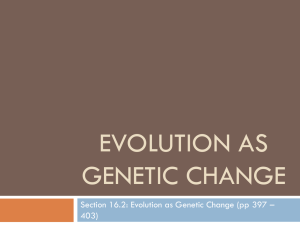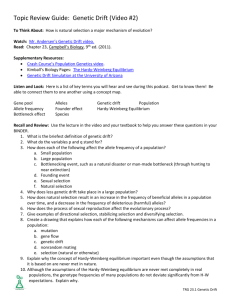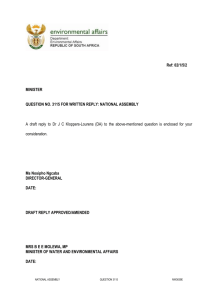Bio 155 - Natural History of Animals Dr. Beverly Krilowicz
advertisement
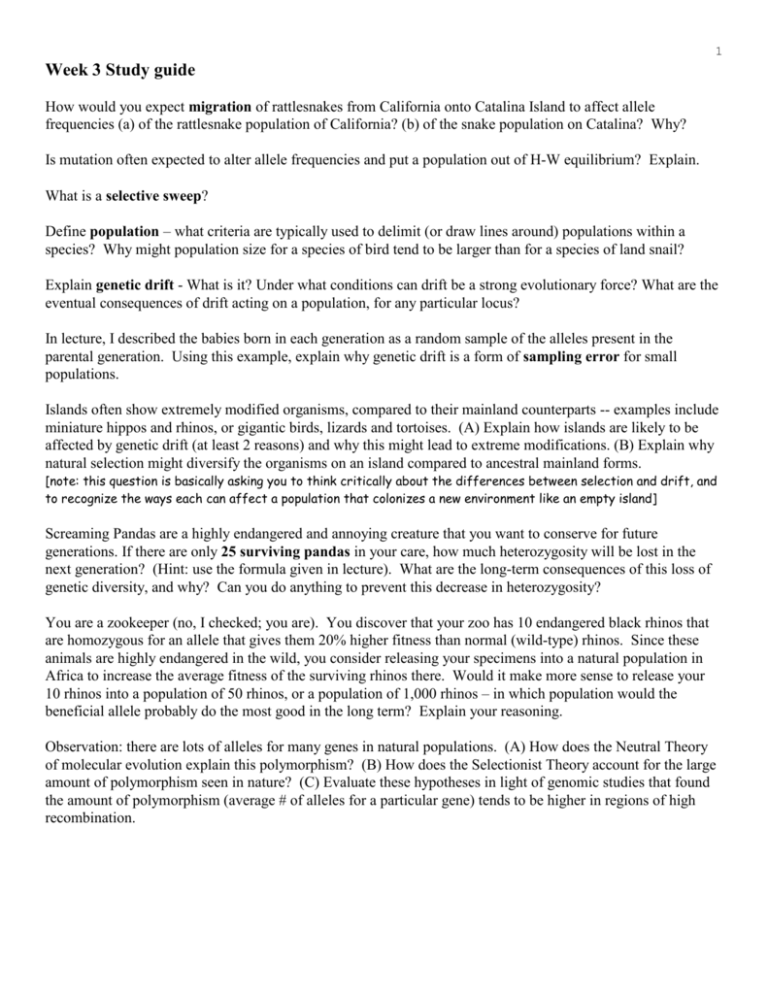
1 Week 3 Study guide How would you expect migration of rattlesnakes from California onto Catalina Island to affect allele frequencies (a) of the rattlesnake population of California? (b) of the snake population on Catalina? Why? Is mutation often expected to alter allele frequencies and put a population out of H-W equilibrium? Explain. What is a selective sweep? Define population – what criteria are typically used to delimit (or draw lines around) populations within a species? Why might population size for a species of bird tend to be larger than for a species of land snail? Explain genetic drift - What is it? Under what conditions can drift be a strong evolutionary force? What are the eventual consequences of drift acting on a population, for any particular locus? In lecture, I described the babies born in each generation as a random sample of the alleles present in the parental generation. Using this example, explain why genetic drift is a form of sampling error for small populations. Islands often show extremely modified organisms, compared to their mainland counterparts -- examples include miniature hippos and rhinos, or gigantic birds, lizards and tortoises. (A) Explain how islands are likely to be affected by genetic drift (at least 2 reasons) and why this might lead to extreme modifications. (B) Explain why natural selection might diversify the organisms on an island compared to ancestral mainland forms. [note: this question is basically asking you to think critically about the differences between selection and drift, and to recognize the ways each can affect a population that colonizes a new environment like an empty island] Screaming Pandas are a highly endangered and annoying creature that you want to conserve for future generations. If there are only 25 surviving pandas in your care, how much heterozygosity will be lost in the next generation? (Hint: use the formula given in lecture). What are the long-term consequences of this loss of genetic diversity, and why? Can you do anything to prevent this decrease in heterozygosity? You are a zookeeper (no, I checked; you are). You discover that your zoo has 10 endangered black rhinos that are homozygous for an allele that gives them 20% higher fitness than normal (wild-type) rhinos. Since these animals are highly endangered in the wild, you consider releasing your specimens into a natural population in Africa to increase the average fitness of the surviving rhinos there. Would it make more sense to release your 10 rhinos into a population of 50 rhinos, or a population of 1,000 rhinos – in which population would the beneficial allele probably do the most good in the long term? Explain your reasoning. Observation: there are lots of alleles for many genes in natural populations. (A) How does the Neutral Theory of molecular evolution explain this polymorphism? (B) How does the Selectionist Theory account for the large amount of polymorphism seen in nature? (C) Evaluate these hypotheses in light of genomic studies that found the amount of polymorphism (average # of alleles for a particular gene) tends to be higher in regions of high recombination.

